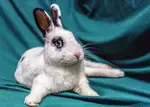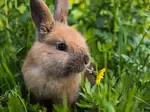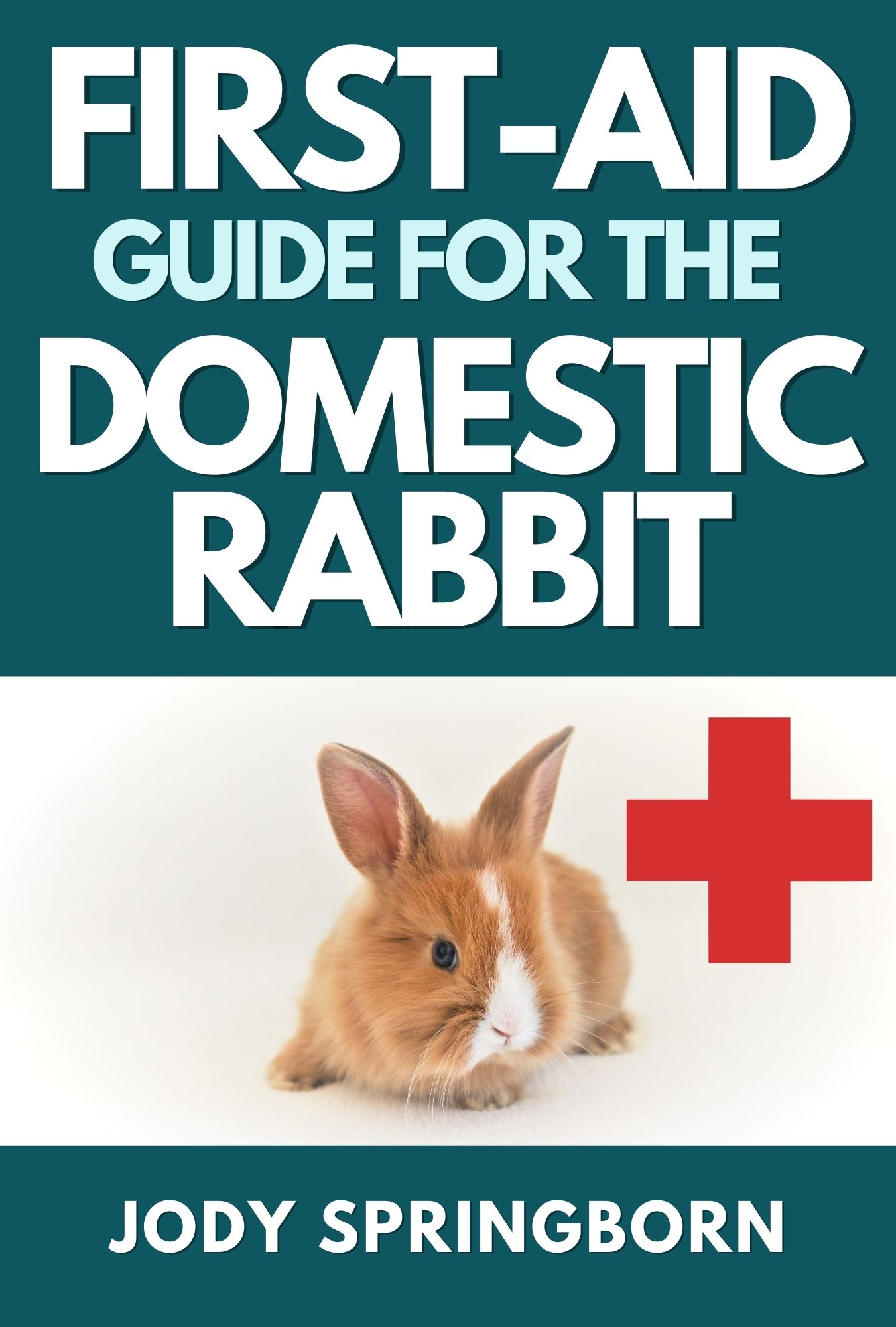- Home
- Rabbit Hemorrhagic Disease
Rabbit Hemorrhagic Disease
 Wild Hare
Wild HarePhoto by James Weygand
Key Points:
- Rabbit Hemorrhagic Disease is highly contagious and deadly to rabbits.
- Currently, in the United States, the RHDV2 strain is killing both wild and domestic bunnies.
- There is no cure. Often, rabbits die suddenly with little to no warning.
- The best way to protect our pets is to implement biosecurity measures in our homes.
What Is Rabbit Hemorrhagic Disease Virus?
Rabbit hemorrhagic disease virus is a highly contagious and deadly disease that affects rabbits only. It was first recorded in China in 1984, but has since traveled to over 40 countries around the world, becoming endemic in many of those countries and killing millions of wild and domestic rabbits. The two main strains to which most vets and bunny owners refer are RHDV and the more recent RHDV2, which first appeared in 2010.
The original RHDV strain has an incubation period of only 1-3 days, with death occurring 12-36 hours after the first onset of symptoms. However, most affected with RHDV are peracute, meaning they are usually found dead within a few hours of eating and behaving normally (Harcourt-Brown, 2018). The mortality rate is 70-90%. Although all domestic rabbit breeds are vulnerable, rabbits under the age of 2 months do not fall ill and if they are exposed to the virus, they develop an immunity.
RHDV2 is rapidly becoming the dominant strain worldwide and it is the strain that is now here in North America. It has the same clinical signs as RHDV, but baby bunnies do not have the same natural immunity to it. It has also spread to hares, cottontails, jackrabbits and other North American native species, while RHDV only affects the European rabbit (Oryctolagus cuniculi), from which our domestic rabbits descend. The incubation period for RHDV2 is 3-9 days and the mortality rate varies considerably from 5-70% (World Organization of Animal Health, 2016) depending on how the disease manifests itself. Infected rabbits more often manifest milder symptoms, which can help them survive it.
Both strains primarily attack the liver and spleen. Most consistent post-mortem lesions are hepatic necrosis and splenomegaly (Spickler, 2016). The evidence of hemorrhaging can also be seen in the heart, lungs and kidneys post-mortem. The cause of death is internal hemorrhaging or liver failure.
The disease manifests as the following:
- Peracute: the rabbits are found dead with no prior indication of illness.
- Acute: the rabbits show lethargy, high fever (greater than 104F/40C), rapid respiratory rate and an extreme drop in blood pressure. Foamy, bloody nasal discharge may also be present, as well as blood in the urine or a bloody vaginal discharge. Neurological signs such as ataxia (stumbling, incoordination) may also be present. Death usually occurs within 12 hours of symptoms. Recovery is rare.
- Subacute: the rabbits experience milder symptoms and have a better chance of survival. This is more likely with the RHDV2 strain.
- Chronic: a lower percentage of infected rabbits experience weight loss, lethargy and jaundice (yellow tint to the sclera of the eye). Death occurs in 1-2 weeks due to liver failure. However, rabbits who survive show a high number of antibodies.
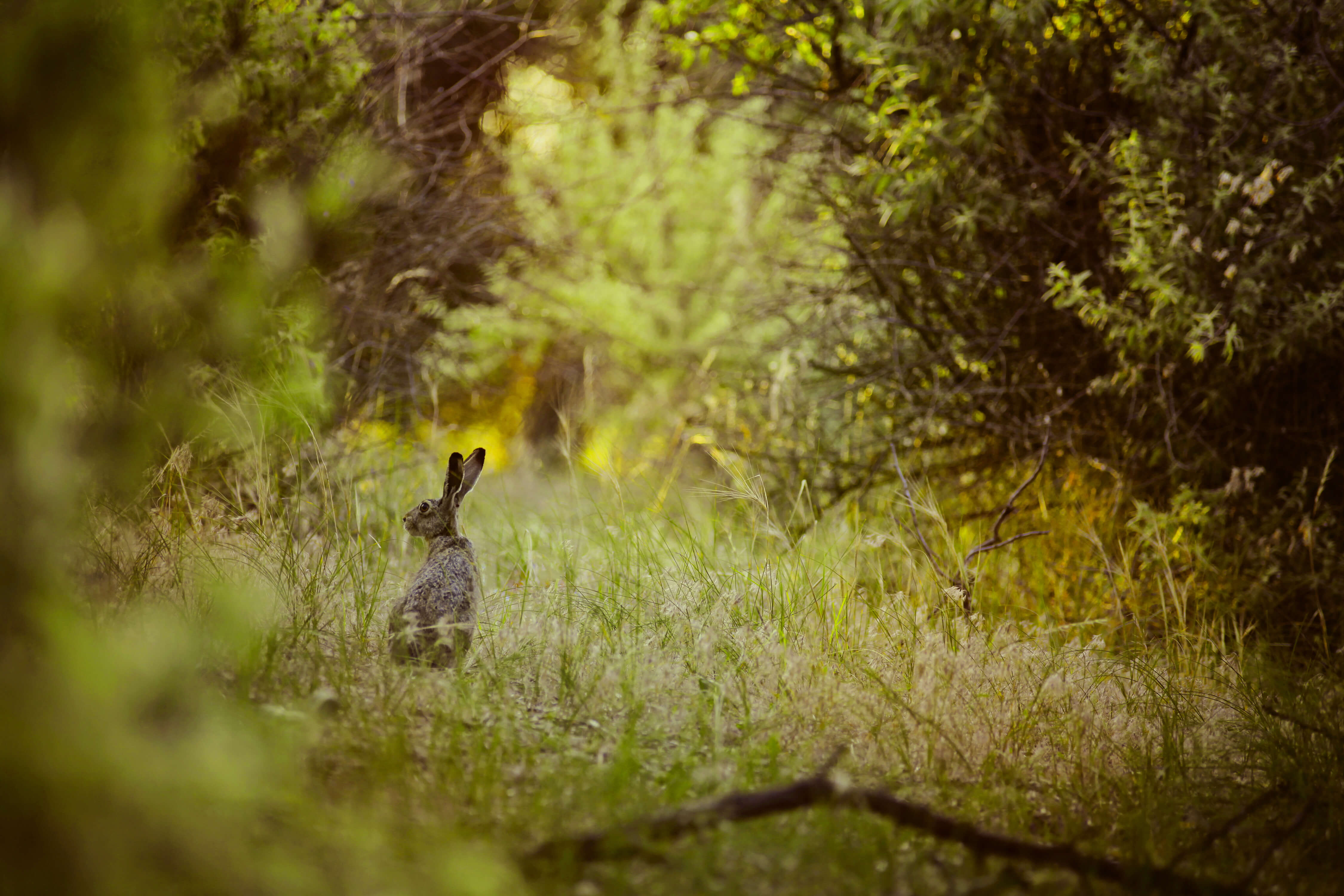 Photo by Olga Savina| Shutterstock.com
Photo by Olga Savina| Shutterstock.comSigns of Rabbit Hemorrhagic Disease Virus
The virus kills quickly, giving the owner little chance to save their bunny. If you live in an outbreak area, be watchful for the following signs:
- Loss of appetite
- Fever
- Lethargy
- Rapid and/or labored breathing
- Frothy and bloody nasal discharge
- Neurological issues - convulsions, paralysis, ataxia
- Blood in the urine and/or bloody vaginal discharge
- Jaundice
- Cyanosis (blue tint) of the mucus membranes
If you come across a dead wild hare or rabbit, do not touch! Contact your local Fish and Wildlife office. Any sudden death of pet rabbits should be reported to your veterinarian ASAP.
 Black-tail Jackrabbit
Black-tail Jackrabbit Photo by Ingrid Curry| Shutterstock.com
Transmission
The virus is spread easily and is extremely difficult to eradicate. It survives freezing temperatures and can endure 122F (50C) for up to one hour. Studies show that it can survive outside the host for 10-19 months at room temperature in a controlled setting (Harcourt-Brown, 2002). It can remain viable for several months in an outside environment. Rabbits may become infected the following ways:
- Direct contact with another infected rabbit. The virus enters the body through the mouth, nose or eyes. The virus can also be present in the urine and feces of infected rabbits.
- The bunny comes in contact with a contaminated surface, such as food and water dishes, pens, bedding, toys, blankets, cages and fences.
- People can also transmit the virus via clothing and shoes.
- Other animals besides rabbits can also introduce the virus via their fur or paws. It can be our pets, dogs and cats who go outside, or wild mice and rats entering our gardens. This disease only affects rabbits.
- Contaminated hay or vegetables. If you live in a place where you can go into a field and forage treats for your bunnies, this may also be a source of infection. Avoid places where wild rabbits and hares frequent and try to purchase hay and vegetables from areas not experiencing an outbreak. Wash vegetables well before feeding out.
- Biting insects, such as flies, fleas and mosquitoes can be vectors.
- The virus continues to be viable for several months within carcasses of infected rabbits. Therefore, feces of predators and scavengers can also be sources of infection.
At this time, it is unknown if recovered rabbits can transmit to other rabbits.
 Scottish Mountain Hare
Scottish Mountain HarePhoto by Chanonry| Shutterstock.com
Prevention and Treatment
There are several vaccines available in Europe that will treat one and/or both strains of the virus. In the Fall of 2021 US company, Medgene Labs, received Emergency Use Authorization from the USDA for their two-dose regimen vaccine. The second dose is given 21 days after the initial injection, and the bunny is fully immunized 14 days afterward the second dose.
The disease is usually diagnosed post-mortem, but a vet may suspected it, especially if a household has recently experienced a sudden unexpected death of other rabbits. If a vet surmises a rabbit of being infected with the virus, the bunny must be isolated and appropriate supportive care given. Supportive care may include syringe feedings, applying heat, fluid therapy, pain control, etc. Anyone caring for the rabbit must be wearing appropriate personal protective equipment (gloves, gown, shoe covers, etc).
The best way to keep your rabbits safe, regardless of vaccination status, is to do the following:
- Keep your rabbits indoors, especially if you have wild rabbits living nearby.
- No outdoor exercise.
- Avoid visiting other rabbits, whether they belong to a friend, another family member, pet store, farm, rabbit show, rescue, vet, etc. No bunny 'playdates', bunnies need to social-distance.
- If you come in contact with other rabbits, wash your hands thoroughly. Leave your shoes outside the home. Change your clothes.
- Clothes should be washed twice in hot water.
- To disinfect shoes, clean all dirt and debris from the soles as disinfectants does not work when surfaces are soiled. Read the label on disinfectants for specific use. Disinfectants must remain wet on the surface for the required contact time specified.
- Learn where your hay and vegetables are grown. This may be easier said than done. However, be aware that the hay you buy today was harvested months ago. Also, going to Farmer's Markets and talking to the growers themselves may give you some assurances. For example, are the vegetables grown in a field or a greenhouse?
Keep in mind that researching the source of your rabbit food can be exhausting and frustrating. If you cannot find out details, wash the vegetables as best you can and just stay in contact with your local suppliers to note if there have been any changes. - Don't forage for wild grasses, flowers or branches in an outbreak area.
- Make sure your window and door screens are in good repair.
- If you take in any new rabbits or foster rabbits, quarantine for at least 14 days.
- Keep cats indoors. Keep dogs away from the areas your rabbits live and exercise. If your rabbits are free range, consider limiting them to a section or room of the house.
- Make sure your cats, dogs and/or rabbits are all up on their flea treatments. Revolution is a rabbit-safe product.
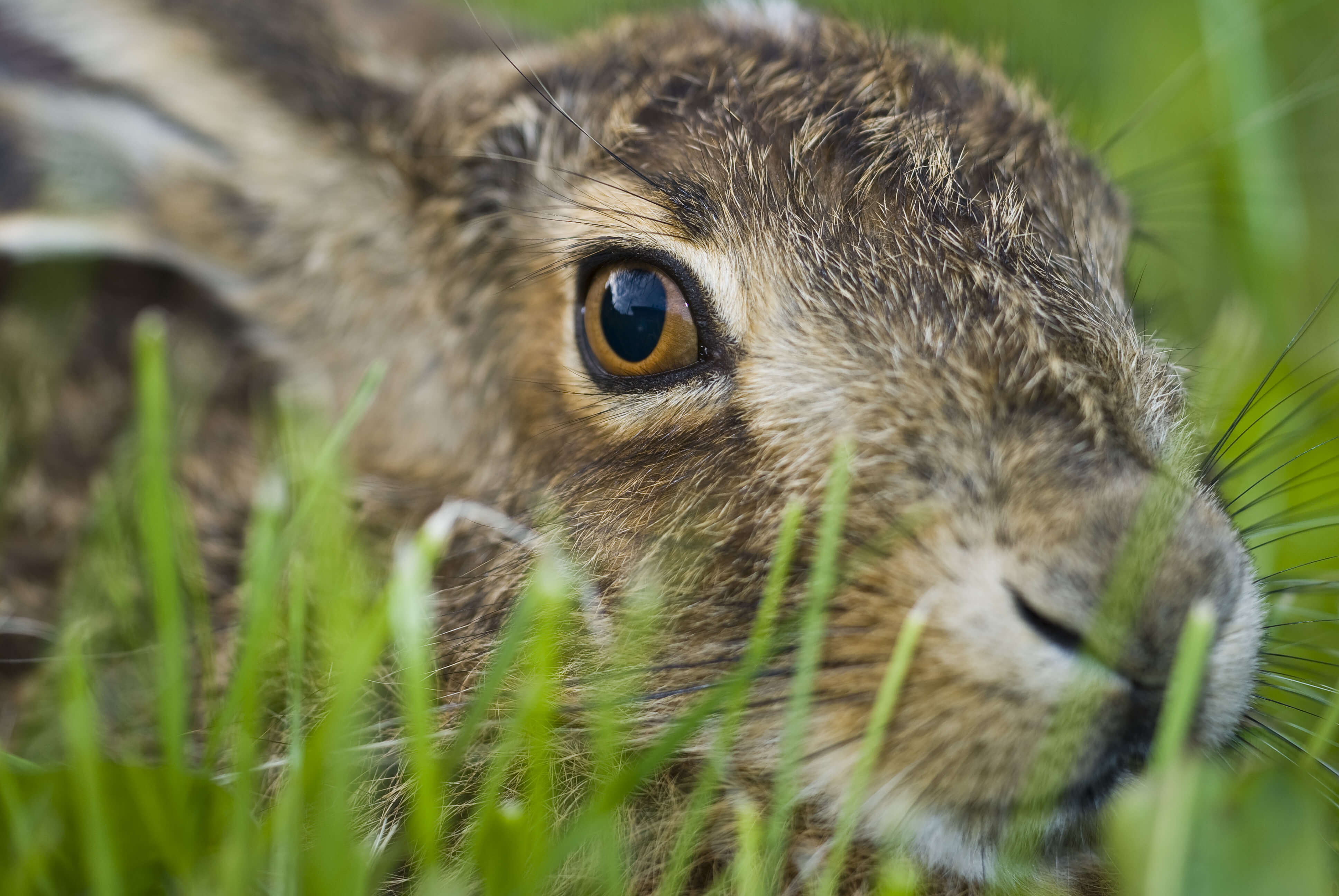 Brown Hare
Brown Hare Photo by Pavel Mikoska| Shutterstock.com
Best Disinfectants for Rabbit Hemorrhagic Disease Virus
There are a number of products that kill the rabbit hemorrhagic disease virus. If you have a cleaning product at home that kills feline calicivirus, then it should also be effective against RHDV (Harcourt-Brown, 2018). These are the most easily available products:
- Household bleach (sodium hypochlorite)
- Virkon S (potassium peroymonosulfate)
- Rescue (accelerated hydrogen peroxide)
Read USDA guidelines on how to properly use bleach and Virkon for disinfection purposes.
How to Make Your Own Sanitizing Foot Bath
You can purchase disinfectant foot baths online, however, you can also make your own. Take a metal tray, such as a cookie sheet. The sides should be high enough to keep liquid inside (approximately 2 inches). Place an outdoor mat inside the tray. Be sure that the mat fits well within the tray. Soak the mat with a disinfectant solution (be sure to follow the label instructions). The mat should be submerged enough so the soles of the shoes stay wet for the required time. The soles of your shoes should be clean of dirt and debris BEFORE you disinfect them, as the dirt and debris interferes, preventing the virus from being killed. Wet the soles with the solution and keep them wet per disinfectant's label instructions. Afterwards, the shoes can air dry.
Further Reading
Abrantes J., et al. Rabbit haemorrhagic disease (RHD) and rabbit haemorrhagic disease virus: a review. Vet Res 43, 12 (2012) https://doi.org/10.1186/1297-9716-43-12
Capucci L., et al. Increased pathogenicity in rabbit haemorrhagic disease virus type 2. Veterinary Record 180, 426 (2017) http://dx.doi.org/10.1136.vr.104132
Harcourt-Brown, F. Rabbit haemorrhagic disease and its variants (Lagoviruses). August 2018
Hollwarth, A. Rabbit haemorrhagic disease 1 and 2: Diagnosis and treatment of the highly contagious viral disease. October 2019
House Rabbit Society. Rabbit Hemorrhagic Disease Virus (RHDV). May 2020
OIE. Rabbit Haemorrhagic Disease. January 2019
Science Direct. Rabbit Hemorrhagic Disease
Spickler, Anna Rovid. 2016. Rabbit Hemorrhagic Disease. Retrieved from http://www.cfsph.iastate.edu/DiseaseInfo/factsheets.php
USDA. Factsheet: Rabbit Hemorrhagic Disease. October 2019
USDA. General Guidance for Cleaning and Disinfection of Rabbit Hemorrhagic Disease Virus (RHDV) Contaminated Premises. April 2020
The information presented is for educational purposes only and does not substitute veterinarian care. This information should not be used for diagnostic purposes, for treatment of an illness or injury and never should be substituted for veterinarian care by a licensed veterinary practitioner. The Educated Rabbit cannot be held responsible for the accuracy of the information contained, nor be held responsible for any action, based on information found in The Educated Rabbit.
Seek advice from your veterinary professional for any rabbit health issues and before administering any drugs!
